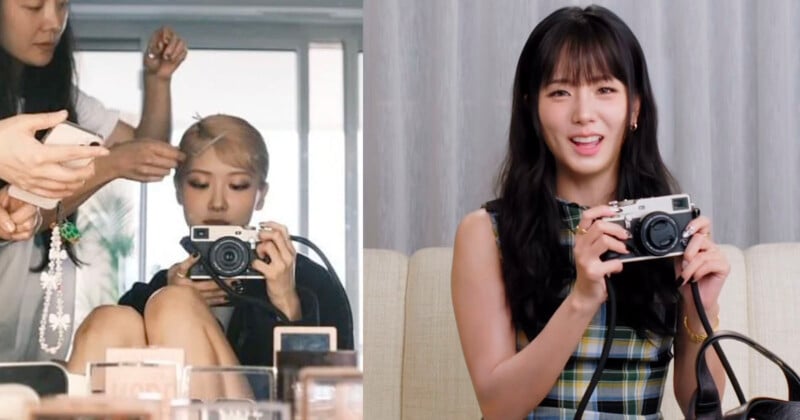The Enduring Desirability of the Fujifilm X-Pro

Last week, Vogue France published a short snippet from an interview where Jisoo — an incredibly popular member of the K-pop group Blackpink — talks about her love of the Fujifilm X-Pro3. Describing the photos it takes as “cinematic” and “atmospheric,” she also touches on another angle of why she and her friends like it: how it looks.
“I bought this camera about three years ago,” Jisoo says. “And the photos came out with a really cinematic, atmospheric look. And the day right after I bought this, the members [of Blackpink] and I had a magazine photo shoot. So I took photos of all the members that day. Rosé also liked this camera so much that she said, ‘oh, Unni, can I buy this, too?’ Of course! So we have this as our couple camera.”
As photography enthusiasts, who are a minority when it comes to camera sales, it’s easy to disregard when a celebrity or public figure uses a specific brand or model of camera as irrelevant. Those who care more about photography as a serious profession hardly care about that camera’s appearance in pop culture, other than to complain that a lot of publicity will hurt the camera’s availability or price.
But that’s the key: the influence of pop stars had a direct impact on a camera’s sales. When Taylor Swift picked up an Olympus E-M10 Mark IV, sales spikes were noticed — OM System executives confirmed as much to PetaPixel in conversations earlier this year. For camera makers, seeing a celebrity with their camera in hand is akin to gold. Pop culture icons drive public discourse and that leads to design decisions that are meant to appeal directly to that market segment.
It’s not by accident that Fujifilm added a film simulation dial to several of its cameras, or that Nikon and Panasonic Lumix both added “looks” to their camera interfaces in the last year in an attempt to mimic the same film simulation concept. The Lumix S9 and the Nikon Zf exist for the same exact reason: Fujifilm’s aesthetic is popular.
The X-Pro series and the X100 series are the final forms of the design aesthetic that not only saved Fujifilm years ago but also helped cement it as one of the most popular camera brands in the world. Before it latched on to the tactile dials and the rangefinder-style viewfinder, Fujifilm’s cameras lacked a consistent design language. Where Fujifilm has succeeded is seeing what works and diving in head-first, embracing it, and protecting it.
The X-Pro “look” has an enduring, irreplaceable desirability. That film camera-esque, analog-inspired design is just consistently eye-catching. Even photographers who have never once fired a single photo with an X-Pro have a hard time not admitting that it is just a sharp-looking camera.
The X-Pro is the most consequential camera that Fujifilm ever made. It is hugely important. Launched in 2012, it was the first camera in the X-series line and was accompanied by the 18mm f/2, 35mm f/1.4, and 60mm f/2.4 primes. Suddenly and all at once, Fujifilm was in the mirrorless camera game, years ahead of the competition. Not only that, it entered the fray in style.
![]()
Fans of the system have been begging for a new version for years now, and its absence in the current Fujifilm lineup has become glaring. Fujifilm knows this.
“We haven’t abandoned the line, so it will come one day, but we need something which would satisfy the expert users,” Yuji Igarashi, General Manager of Professional Imaging Group, Imaging Solutions Division, Fujifilm Corporation, told PetaPixel in March. “Of course, we can put the X-Processor 5 and the new X-Trans sensor in an X-Pro3 and call it X-Pro4, but that’s boring.”
Fujifilm feels the weight of responsibility more than anyone, and the importance of the X-Pro mixed with the lukewarm response to the X-Pro 3 due to its fragility has put the company in a tough spot.
“We probably made it difficult for ourselves because we perhaps made the X-Pro too special,” Igarashi concluded.
![]()
But the thing is, the X-Pro is special. The designers knew this, which is why they hid an Easter egg that rolled credits after 100,000 photos — a secret that didn’t reveal itself until just this year. Even though Fujifilm has kept fans of the system waiting for years longer than they likely would have wanted — the X-Pro3 was announced in 2019 — it’s because Fujifilm knows that once it’s out there, it will be the bar that the company will be judged against. When a camera is this popular and this important, it needs to be right.
The saving grace for Fujifilm is that no matter how long the company waits, it probably won’t matter. Jisoo is still talking about this camera she bought three years ago, when it was already two years old. She’ll probably keep talking about it and using it for many more years to come. That’s the power of the X-Pro’s design.
Fujifilm can take as long as it wants. When the next X-Pro arrives, it will be a cultural touchstone for at least a decade.